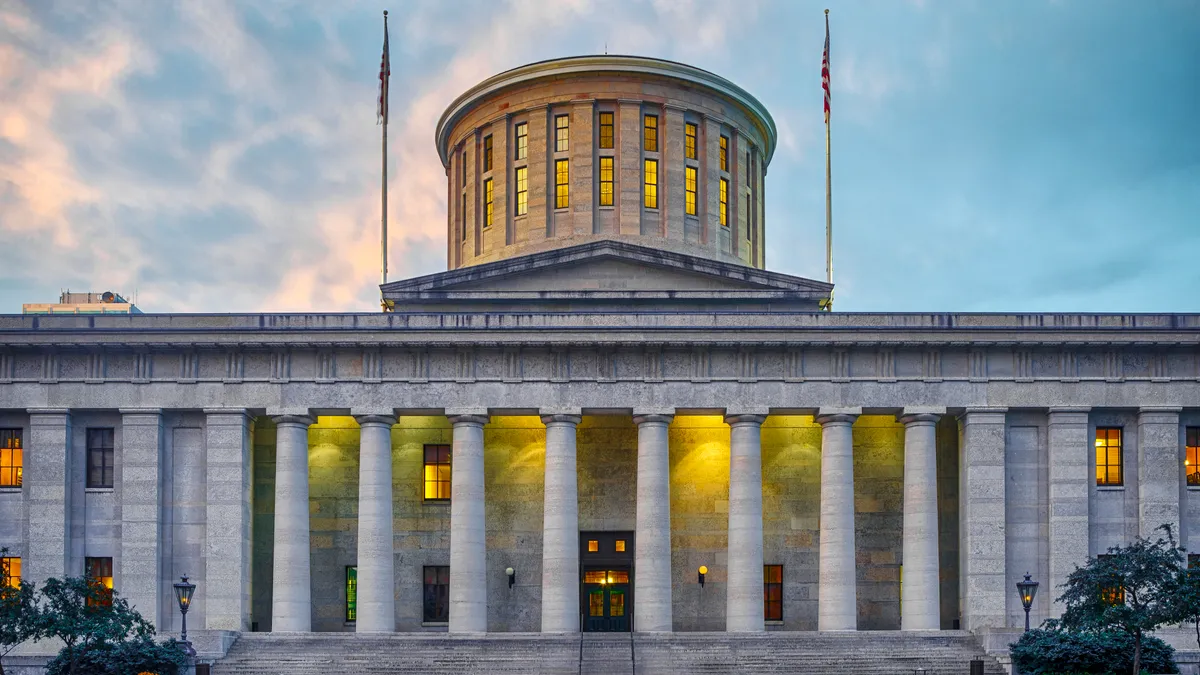Dive Brief:
- Generative artificial intelligence may fail to spark expected big gains in productivity, prompting setbacks in the share prices of companies that have invested heavily in the emerging technology, Federal Reserve Vice Chair Michael Barr warned Tuesday.
- “It is possible that the expected value creation from GenAI was overhyped, anticipating transformative breakthroughs rather than incremental productivity gains,” Barr said in a speech. “This could trigger market corrections for the firms that have heavily invested in this technology if reality doesn’t measure up to expectations.”
- Generative AI will likely bring “widespread productivity gains” and evolve along one of two pathways, Barr said. Adoption may incrementally augment what humans do today, or it may spur “transformational change where we extend human capabilities with far-reaching consequences.”
Dive Insight:
Nearly eight out of 10 CFOs (77%) plan to boost spending on generative AI and other technologies this year even in the face of persistent economic and geopolitical disruptions, Gartner found in a survey.
Roughly half of those finance leaders (47%) will increase technology budgets by at least 10%, while 30% plan to expand spending between 4% and 9%, Gartner said.
“The continued focus on technology aligns with developments in traditional and generative AI, which promise to drive new offerings, enhance decision-making and boost productivity,” Randeep Rathindran, research vice president with Gartner’s finance practice, said in a statement.
In finance, generative AI may prove to be a two-edged sword, Barr said, increasing “both the vulnerabilities and sources of resilience that already exist in the system.
“Attractive trades become more crowded, but risk managers gain new insights,” he said. “Malicious actors gain new tools, but cyber defenders become better armed.”
CFOs and other actors involved in both the private and public sectors need to stay ahead of the technology’s potential hazards, he said in a speech to the Council on Foreign Relations in New York.
“So long as financial regulators, enterprise risk managers and others charged with managing downside risks prioritize efforts to keep pace with the evolving financial ecosystem, there’s nothing to suggest a wholesale transformation of the balance of risks,” Barr said. “Of course, keeping pace will pose challenges.”
In finance, generative AI may bring incremental gains as, for example, community banks use chatbots to provide customized financial advice based on local knowledge, Barr said.
Financial institutions of all sizes would continue to make strides by using generative AI in compliance, fraud detection, risk management and document analysis, he said.
In the second scenario, generative AI would spark profound change, making finance "radically different,” Barr said.
On this pathway, “individuals with access to hyper-personalized financial planning and businesses with innovative products and services seamlessly connect with one another through near-frictionless or novel forms of financial intermediation,” he said.
Traders and risk managers would use generative AI analytic tools that tap dynamic, real-time data from both public and private sources, Barr said.
In order to harness the gains from generative AI while limiting its risks, the Fed and financial institutions should invest in the technology, incorporate it in their work flows and train staff on how to use it responsibly, Barr said.
“The financial regulatory community should approach the changing landscape with agility and flexibility,” he said. “And beyond the financial sector, collaboration between governments, private industry and research institutions will be critical to ensure that GenAI systems are not weaponized in catastrophic ways.”















